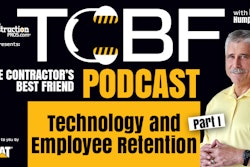Today’s news reports proclaim good news: the percentage of unemployed workers has reached its lowest point since 2001. While that’s great for people seeking work, employers are having a hard time filling vacancies.
Obviously, you don’t want to hire just anyone for the vacant positions within your company. Hiring mistakes are costly in terms of training, low employee morale, and client dissatisfaction. Regardless of technological advances, every business needs good talent to keep and improve its competitive edge.
When the labor pool shrinks, the stakes for hiring increase. Whether you run a small operation or manage a department within a large company, identifying the right talent requires some creativity. Employment Crossing[1] offers some ideas:
● Employee referrals. Offer bonuses--cash or other perks--to employees whose referrals are hired.
● Network. Other business professionals and friends may know good job candidates, but not have the right job vacancies at their companies.
● Hire a professional recruiting firm to do the initial legwork for you.
● Post job openings across multiple platforms. Yes, that includes the local newspaper’s classifieds and Craigslist, as well as Monster, Indeed, ZipRecruiter, and other services. A wide broadcast will yield the best selection of candidates.
Of course, hiring new candidates is only part of the solution to keeping a full staff of good people in a tight labor market. You must also retain those good employees you already have, which may mean revising and updating policies and benefits and, perhaps, wages. The NAPSA Certified Sweeper Operator (www.SweeperSchool.com) training program is a great tool for improving skills while possibly earning that higher rate of pay! The goal of policy changes and generous benefits is to build the company’s reputation as a good employer that cares about its employees--a place where people want to work.
Another tactic to weed out unsuitable employees is to be as specific as possible when writing job descriptions and candidate requirements. This helps prevent unqualified candidates from applying for job vacancies. The obverse is that rigid requirements may cause the company to miss out on great workers who only need a bit of training.
Look beyond the usual candidate pool for employees.[2] If a job position doesn’t really require a university degree or certain certifications, then consider candidates who bring a strong work ethic, great attitude, and willingness to learn instead of academic degrees and professional certifications. If the commute doesn’t restrict employees, seek workers in rural areas beyond your metropolitan service area. Hiring someone who otherwise would have found a job in a normal economy, you’ll likely find a grateful employee who will bring a strong array of skills and experience to the company. Take a chance.
[1] “How to Locate Good Candidates in a Tight Labor Market” published by Employment Crossing: http://www.employmentcrossing.com/employers/article/231608/How-to-Locate-Good-Candidates-in-a-Tight-Labor-Market/
[2] Connerly, Bill. “Hiring in a Tight Labor Market: 6 Tips for a Busy Manager” published May 24, 2017, by Forbes: https://www.forbes.com/sites/billconerly/2017/05/24/hiring-in-a-tight-labor-market-6-tips-for-a-busy-manager/#5a23324a244b.










![Lee Boy Facility 2025 17 Use[16]](https://img.forconstructionpros.com/mindful/acbm/workspaces/default/uploads/2025/09/leeboy-facility-2025-17-use16.AbONDzEzbV.jpg?ar=16%3A9&auto=format%2Ccompress&fit=crop&h=135&q=70&w=240)








